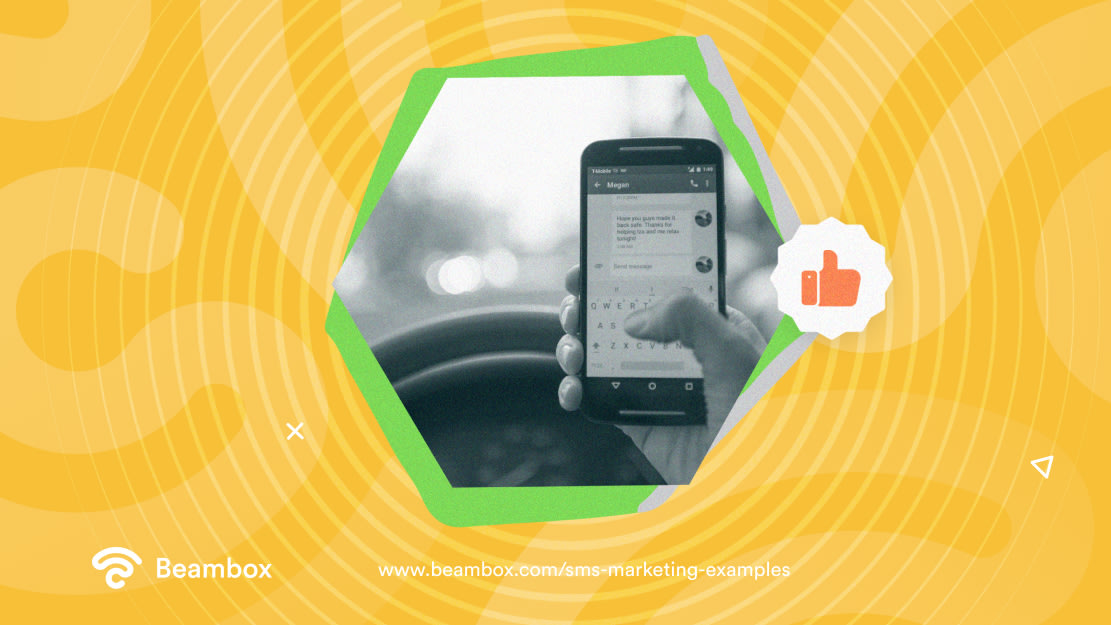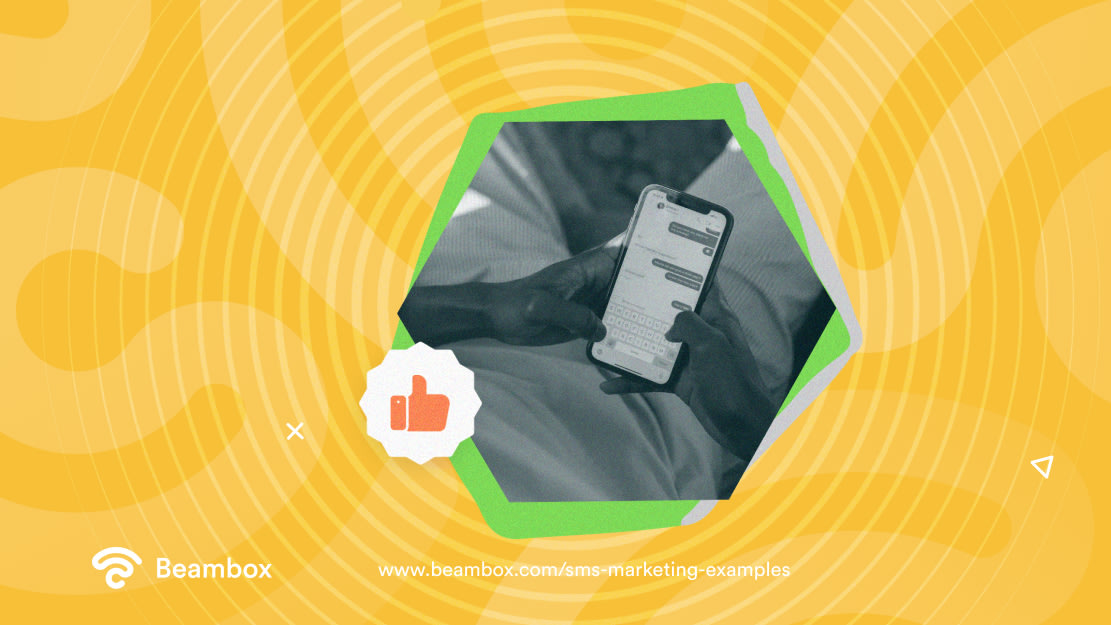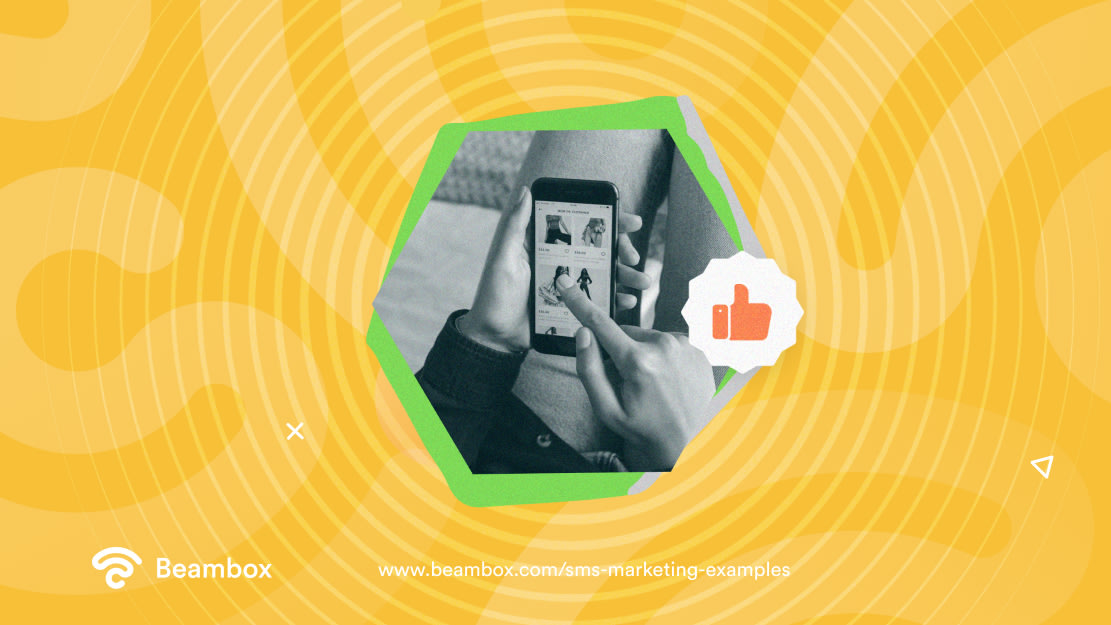SMS Marketing Examples To Inspire Effective Campaigns
The average person comes across multiple promotional channels and ads throughout the day. Standing out in such a crowded environment isn’t easy without a direct line to customers. If you’re considering using text messaging as this direct line, you’re going in the right direction. All you need are some SMS marketing examples, and you’re good to go.
After all, business texts aren’t as straightforward as the ones you send to friends and family. You’ll have to focus on multiple areas, like personalization, tone, offering, etc., to make your SMS marketing campaigns successful.
That’s why we’ve put together this guide, which starts with the definition and benefits of SMS marketing. Stick to the end for some example SMS campaigns that can work wonders for your overall marketing strategy.

What Is SMS Marketing and Why Does It Stand Out?
SMS marketing uses text messages to reach existing and potential customers. Businesses can send promotional offers, appointment reminders, shipping notifications, and other types of messages directly to a customer’s mobile phone.
Email marketing is another approach that allows you to reach your customers directly. However, while emails and other marketing types work well, there are some areas where you can’t beat SMS marketing.
Firstly, surveys from Text Anywhere show that SMS marketing has unmatched open rates, reaching 98%. On the other hand, email marketing only reaches an open rate of 22%.
Secondly, we’ve already mentioned that SMS marketing messages reach customers directly. While email also has this ability, there are spam filters and cluttered inboxes with which to compete. However, one of the benefits of SMS marketing is that there are no such barriers.
Besides, social media marketing relies on the channel’s algorithm, which might change regularly. But with SMS marketing, you own your contact list.
Moreover, customers opt-in to receive SMS messages from you. When they share their mobile numbers with you, they are permitting you to contact them.
Therefore, you have a guarantee that the person receiving the messages wants to hear what you have to say. However, knowing what type of content they’re consenting to is essential.
There’s also a chance of high engagement since text messages are short. Customers don’t have to spend a lot of energy reading or digesting them. Therefore, they might be more willing to act on them.
Lastly, SMS marketing easily integrates with other channels. For example, you can send appointment reminders via text after online bookings. Additionally, SMS marketing for restaurants allows you to send specials or offers.

How To Create the Best SMS Marketing Campaigns for Your Business
Now that you know how text marketing stands out, let’s explore the practical side of your SMS marketing strategy. While it isn’t hard to send promotions through text, you must follow the correct steps for a lasting effect.
You can’t just create a generic message and send it to everyone. Instead, you must take things progressively to create the best SMS marketing campaigns.
- Set achievable goals: Start by deciding what you want your promotional messages to do. Should they spread brand awareness or promote a product? Also, keep the customer in mind. What will the customer achieve by taking action? Coming up with effective CTAs and content will depend on such questions, so think carefully.
- Build an SMS list: You need your customers’ mobile numbers before sending messages. So, build a bulk SMS marketing list with tactics like exit intent pop-up forms, in-store sign-ups, social media promotions, etc.
- Understand the audience: Customers might unsubscribe from your list if they don’t find your message useful. The only way to avoid this is to understand your target audience. Note the demographics, age groups, genders, behaviors, etc., of the people interacting with your brand. Ask them what type of messages they would like to receive from you.
- Craft compelling messages: The next step is to craft the actual message, keeping the research and goals in mind. However, don’t send the same message via text and email campaigns just because they’re direct lines. Your wording and offer should make sense for text messaging. We’ll cover this step in detail later.
- Determine your key performance indicators (KPIs): Measuring your results helps you know what and when to improve. So, decide the metrics you want to measure, like unsubscribe and click-through rates (CTR).

5 Tips on Crafting the Best SMS Marketing Messages
As mentioned earlier, text marketing is only successful when you create the right content. In addition to keeping everything error-free, you must ensure that customers find your text helpful and intriguing.
Doing so is easy, even if you aren’t a professional writer. All you have to do is follow some best practices that lead to the best SMS marketing messages. These practices apply whether you’re using SMS proximity marketing or regular SMS marketing.
The following five tips will help you craft messages that amaze readers and prompt them to take action.
1. Steer Clear of Lengthy Texts
The fact that SMS stands for Short Message Service leaves no doubt that your texts should not be lengthy. Besides, there’s a character limit you need to adhere to. The app truncates your message if it exceeds 160 characters. Some apps might even divide your message into two texts.
Such things create a hindrance and discourage customers from reading your text. Therefore, keep things simple and convey your point in fewer words. You can even use abbreviations to use the character limit effectively.
2. Pay Attention to Personalization
Did you know that 59% of customers want personalization based on past interactions? This means they want businesses to know their needs and develop promotions that align with their preferences. Therefore, ignoring personalization in SMS marketing isn’t an option.
However, adding customers’ names for personalization is no longer enough. Therefore, you must segment your audience based on what sets them apart.
For example, a skincare business can personalize messages based on a customer’s skin type. Or, a clothing company can personalize messages based on what the customer has purchased before.
An instance of SMS marketing examples with personalization would be,
“Hi [Customer name.] Just a reminder: your favorite [product name or category] is back in stock! [Link to the product listing]”

3. Use Language That Creates a Sense of Urgency
Apart from the offer, your text campaigns’ success depends on your tone. The basics include avoiding technical jargon and using a language the reader can easily understand.
Another basic tip is to keep the message conversational. Avoid overly formal language that doesn’t feel genuine or friendly.
Moving on from the basics, creating a sense of urgency can drive immediate results. Words like “limited-time offer,” “only for 24 hours,” and “invalid after 5 hours” create a fear of missing out. Use such words and send time-sensitive promo codes. The effect will increase tenfold if you can combine this urgency with the customers’ past purchases.
4. Include Actionable CTAs
Forgetting to include a compelling call to action (CTA) in your text is the worst mistake you can make. How will the customer perform the intended action when they don’t know what the action is? You might think the content makes it obvious.
However, your aim is to reduce hindrances. If the customer has to think about the next steps, they might not bother with your text. Besides, strong CTAs increase your chances of fulfilling the campaign’s goal.
Therefore, use action words to prompt the customer. “Buy now,” “Register,” “Order now,” etc., are some great options. In addition to being clear, they tell the customer what will happen after they take the action.
Some marketers use fancy language, thinking it will gain customer loyalty or attention. In doing so, they sacrifice clarity and don’t get the intended results. While you can use creativity here, remember that the aim is to promote action instead of gaining attention.

5. Follow SMS Compliance Guidelines
Even though providing you with their mobile numbers shows customer consent, it’s worth asking for explicit permission. Maybe the customer only gave you their number to receive updates, not promotional content.
Knowing this is important to providing a positive experience and avoiding legal problems. Some states and countries have strict rules about customer permission. Check your country’s guidelines for the exact rules you need to follow.
However, most SMS compliance guidelines require businesses to obtain opt-in before adding customers to the SMS list.
Moreover, make it simple for customers to unsubscribe from your messages with clear instructions in each message. Every message should also include your company information to avoid confusion.
Additionally, don’t bombard customers with texts at unreasonable hours. Respect time zone differences if applicable. Lastly, steer clear of promoting illegal products or services and maintain a professional tone.
5 SMS Marketing Examples To Inspire Your Campaigns
You’ve learned the basics of SMS marketing and explored the best practices for crafting the message. Now, we’ll look at the topic that started this discussion: SMS marketing examples!
You can send various types of text messages, each with its guidelines. This tactic might be hard to approach if you’re new to SMS marketing. That’s why we’ve compiled some of the most famous and effective SMS examples to help you create your strategy.

1. SMS To Ask for Customer Reviews
Asking for customer reviews via text increases your chances of getting the necessary information. Since SMS marketing offers unmatched open rates, customers are more likely to read your review requests. All you have to do is make customers feel like their opinions matter.
This way, you’ll have positive reviews to display on your social media profiles and website. Plus, you’ll know what customers think of your brand, which helps you make data-driven decisions.
For example, you can send customers a short survey after they’ve made a purchase. Ask customers what they thought of their shopping experience with you. However, keep things short to avoid frustrating the customer.

2. Drip Campaigns for Creative SMS Marketing
Creative SMS marketing isn’t just about using creative language or surprising customers. It’s about building relationships and fostering long-term engagement. This won’t be possible without sending text drip campaigns.
These campaigns involve sending automated text messages to customers over a set timeframe. Plus, these aren’t random messages. Like email automation, SMS marketing platforms allow you to send trigger-based messages.
This means the platform will send the message as and when the customer takes an action. For example, your drip campaign might start with a welcome message when a customer signs up.
Along with “Thank you for signing up.” send them a list of curated articles. If they click the link, send them special offers. If they don’t, you can try a day later.

3. Marketing Text Messages Examples To Promote Flash Sales
Flash sales via text are another SMS marketing campaign example. Since customers read these messages almost as soon as they get them, time-sensitive sales make perfect sense. Besides, they create the sense of urgency we talked about earlier.
So, start by grabbing attention with a strong opening highlighting the sale’s limited-time nature. Then, communicate the discount or offer. Another great idea for these marketing text message examples is mentioning limited quantities if you sell a product. Once you’re happy with the message, end it with a strong CTA.
You can make flash sales more effective and personal by incorporating your loyalty program. For example, give extra discounts or exclusive offers to the most loyal customers.

4. Delivery Tracking
Another example of SMS marketing is delivery tracking. Customers want transparency and convenience when it comes to deliveries. They don’t want to spend their days wondering where their order is, especially if they’ve paid in advance.
Sending them a link to track their orders via text eliminates the need for them to search for tracking information. So, when a customer places an order, send them a confirmation message. This message should also include an estimate of the time you’ll take to process the order.
Once you’ve processed the order, send the tracking link and estimated delivery date. It would also be a good idea to provide real-time updates like “out for delivery” or “arriving today.”

5. Two-Way Text Messaging
Sometimes, the simplest idea is the most effective. The example of two-way text messaging proves this theory.
Customers want immediate support, whether it’s product information or a service complaint. Yet, some customers don’t want to phone for customer support.
Two-way text messaging presents the perfect solution, letting customers get immediate answers without phone calls. However, don’t leave this conversation entirely to a chatbot.
Of course, you can automate the first message to let customers know you’ve got their message. However, a customer representative should handle the chat after the first text.
Using SMS Marketing To Fulfill Your Marketing Needs
SMS marketing helps but is not enough for an effective marketing strategy. While it stands out in many areas, it isn’t enough on its own. Some people aren’t willing to share their numbers with businesses. In this case, you’ll find it difficult to get the desired results.
Combining the above SMS marketing examples with other types of digital and traditional marketing tactics is ideal.
Beambox’s WiFi platform can help you collect numbers through captive portals. This will help you build a contact list for SMS campaigns. You can also customize the forms to collect other data for different initiatives.
Whether you want to get more reviews, make more sales, or grow your online presence, Beambox’s platform can help. Start your free trial today.



